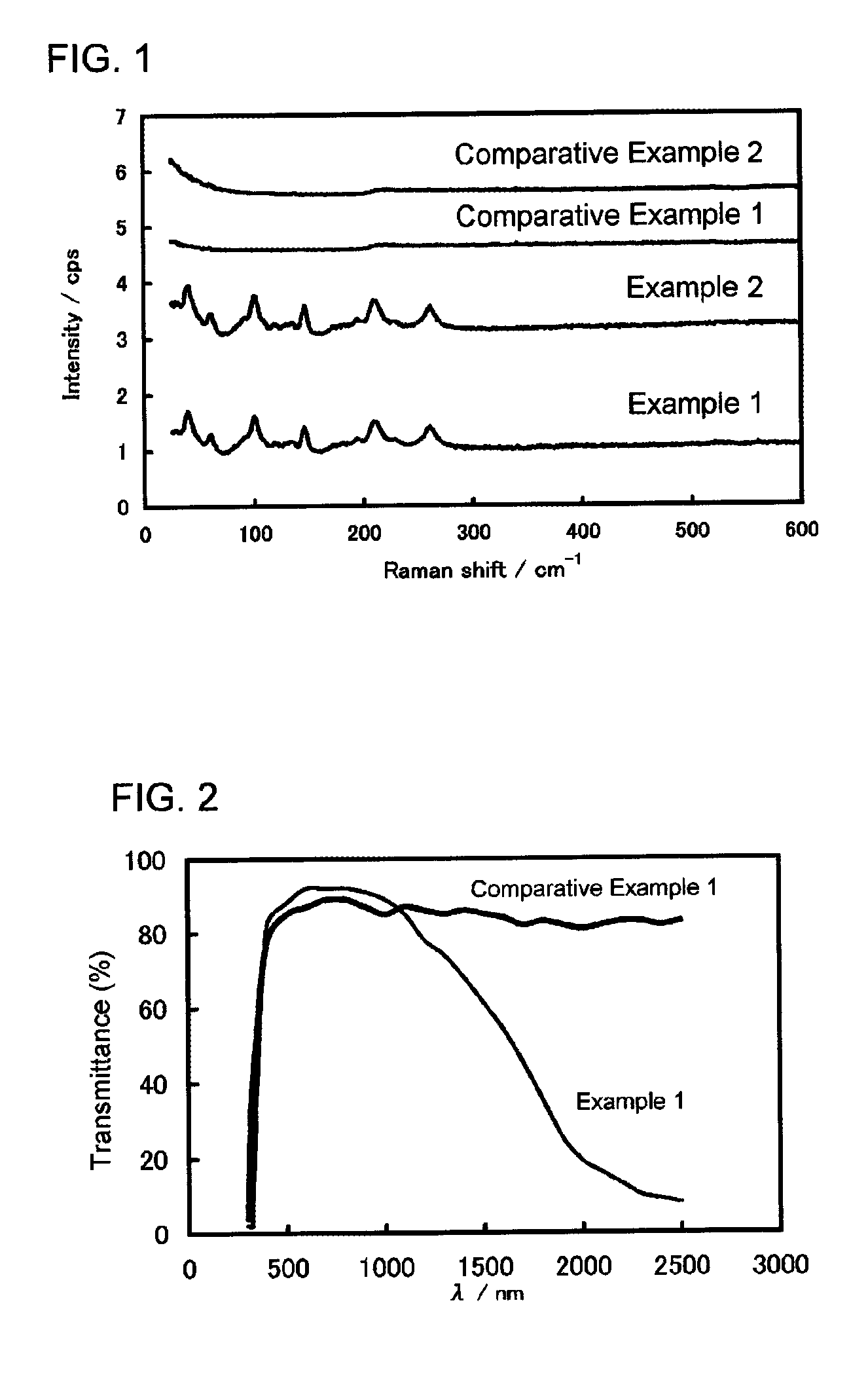Tin oxide particles and method for producing same
a technology of tin oxide particles and oxide conductors, applied in the field of new materials, can solve the problems of limited plastics utility, environmental burden, and limited plastics utility, and achieve the effect of high electroconductivity and transparency
- Summary
- Abstract
- Description
- Claims
- Application Information
AI Technical Summary
Benefits of technology
Problems solved by technology
Method used
Image
Examples
example 1
[0051]In 490 g of pure water was dissolved 3.98 g of sodium hydroxide to prepare an aqueous alkali solution for neutralization (designated solution A).
[0052]Separately, 490 g of pure water was put in a beaker, and a 1 mm diameter Pyrex® glass tube was stuck into the water, through which 100 ml / min of nitrogen gas was fed to bubble the water to remove dissolved oxygen. To the bubbled pure water, the dissolved oxygen concentration of which was found to be 3 ppm, was added 0.5 g of completely saponified polyvinyl alcohol (average degree of polymerization n=400 to 600, hereinafter abbreviated as PVA) and dissolved by heating to 85° C. to prepare an aqueous PVA solution (designated solution B).
[0053]Then, 12.58 g of solid anhydrous tin dichloride was dissolved in the solution B bubbled and heated to 85° C. to prepare an aqueous tin solution (designated solution C). Immediately thereafter, the whole amount of the solution A was slowly fed thereto to prepare a mother solution while continu...
example 2
[0062]Tin oxide particles were obtained in the same manner as in Example 1, except that PVA was not added but, instead, the aqueous alkali solution for neutralization (solution A) was prepared by dissolved 2.66 g of sodium hydroxide in 490 g of pure water. The resulting tin oxide particles were analyzed in the same manner as in Example 1.
PUM
| Property | Measurement | Unit |
|---|---|---|
| infrared transmittance | aaaaa | aaaaa |
| particle size | aaaaa | aaaaa |
| molar ratio | aaaaa | aaaaa |
Abstract
Description
Claims
Application Information
 Login to View More
Login to View More - R&D
- Intellectual Property
- Life Sciences
- Materials
- Tech Scout
- Unparalleled Data Quality
- Higher Quality Content
- 60% Fewer Hallucinations
Browse by: Latest US Patents, China's latest patents, Technical Efficacy Thesaurus, Application Domain, Technology Topic, Popular Technical Reports.
© 2025 PatSnap. All rights reserved.Legal|Privacy policy|Modern Slavery Act Transparency Statement|Sitemap|About US| Contact US: help@patsnap.com


